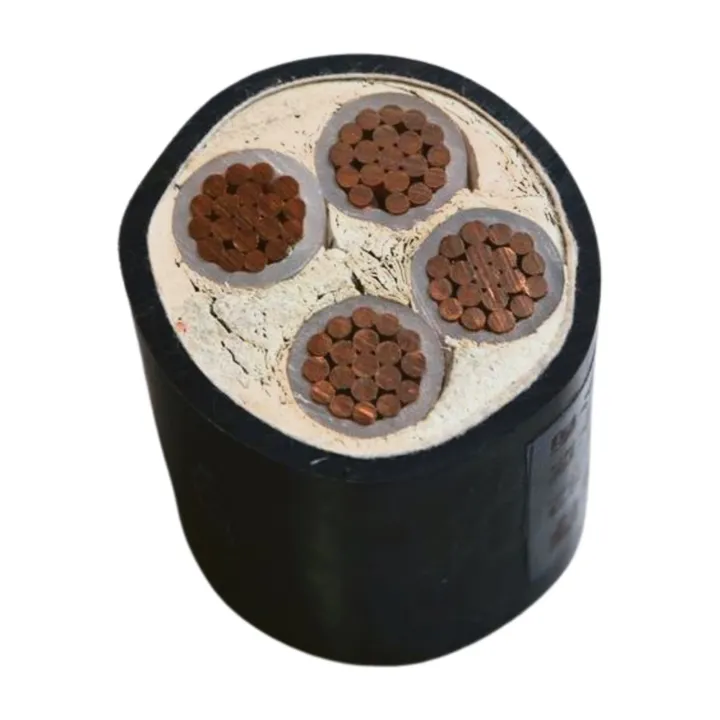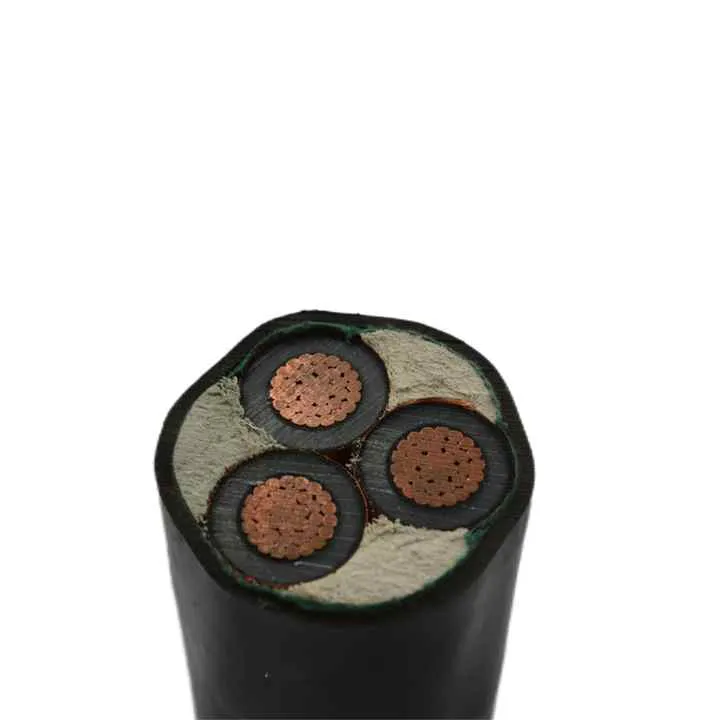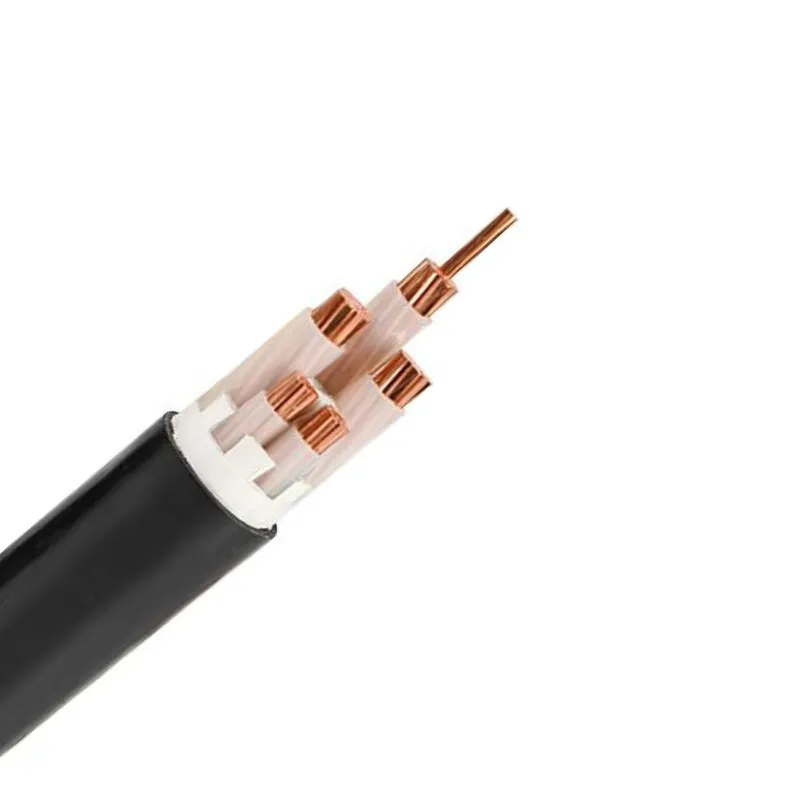How to Choose 0.6/1 kV Underground Copper Power Cables Safely
Time: 2025-07-23 15:48:12
Source: Henan Province Jianyun Cable Co., Ltd.
Selecting 0.6/1 kV underground copper power cables for electrical distribution in residential, commercial, or industrial projects requires careful consideration of safety, performance, and environmental factors. These low-voltage cables, typically used for power distribution to buildings, lighting, and equipment, must withstand underground conditions such as moisture, soil pressure, and potential chemical exposure while ensuring reliable operation and compliance with safety standards. This guide provides a structured approach to choosing these cables safely, detailing key considerations, specifications, and best practices.

Table of Contents
1. Key Considerations for Underground Copper Cables
Choosing 0.6/1 kV underground copper power cables involves evaluating several factors to ensure safety, reliability, and compliance:
-
Environmental Resistance: Cables must resist moisture, soil corrosion, and chemical exposure common in underground settings.
-
Mechanical Strength: Cables should withstand soil pressure, ground movement, and potential damage during installation or excavation.
-
Electrical Performance: Ensure adequate current-carrying capacity and minimal voltage drop for efficient power transmission.
-
Fire Safety: In areas with confined spaces or high safety requirements, cables should have low-smoke, zero-halogen (LSZH) properties to minimize toxic emissions during fire.
-
Regulatory Compliance: Cables must meet international standards such as IEC 60502-1, UL 83, or EN 50575 (EU CPR) for safety and performance.
-
Cost vs. Longevity: Balance initial costs with long-term durability, as copper cables are more expensive but offer superior conductivity and corrosion resistance compared to aluminum.
-
Installation Conditions: Consider direct burial, ducted installation, or conduit use, as these affect cable design and protection requirements.
2. Cable Specifications and Features
0.6/1 kV underground copper power cables should have the following specifications to ensure safety and performance:
-
Conductor: Stranded copper (Class 2 per IEC 60228) for high conductivity, flexibility, and corrosion resistance.
-
Insulation: Cross-linked polyethylene (XLPE) or polyvinyl chloride (PVC) for dielectric strength and environmental protection.
-
Sheathing: PVC, polyethylene (PE), or LSZH for moisture resistance, mechanical durability, and fire safety (LSZH for confined spaces).
-
Armoring: Steel wire armor (SWA) or steel tape armor (STA) for mechanical protection against soil pressure or external impact.
-
Voltage Rating: 0.6/1 kV, suitable for low-voltage applications like building power distribution or street lighting.
-
Temperature Range: -15°C to 70°C for PVC-insulated cables; -40°C to 90°C for XLPE-insulated cables (up to 120°C short-term).
-
Water Resistance: Water-blocking compounds or tapes to achieve IP67/68 ratings, preventing moisture ingress.
-
Certifications: Compliance with IEC 60502-1, UL 83, EN 50525, and EN 50575 (CPR classifications, e.g., B2ca, Cca for fire performance).
3. Steps to Choose Cables Safely
Follow these steps to select 0.6/1 kV underground copper power cables safely:
-
Assess Project Requirements: Determine the load (current and power), cable run length, and voltage drop limits (typically <5% per IEC 60364). Calculate conductor size using standards like NEC or IEC tables.
-
Evaluate Environmental Conditions: Analyze soil conditions (e.g., corrosivity, moisture, rock content) and select cables with appropriate sheathing (e.g., PE for high moisture, LSZH for safety-critical areas).
-
Choose Insulation Type: Select XLPE for high-temperature or harsh environments due to its superior thermal and chemical resistance; use PVC for cost-effective, less demanding applications.
-
Determine Armoring Needs: Use SWA or STA for direct burial in rocky or high-pressure soils; unarmored cables may suffice in conduits or ducts with low mechanical risk.
-
Verify Fire Safety Compliance: For indoor or confined spaces, choose LSZH cables to meet CPR classifications and local fire codes (e.g., NFPA 70, BS 7671).
-
Check Regulatory Standards: Ensure cables are certified to IEC 60502-1, UL 83, or EN 50575, with test reports from accredited laboratories.
-
Request Samples and Test: Obtain production batch samples and test for insulation resistance, continuity, and mechanical durability to confirm compliance with specifications.
-
Engage Reputable Suppliers: Source cables from manufacturers with a proven track record, requesting certificates of conformance (CoC) and third-party inspection reports.
-
Plan for Installation: Consider installation method (direct burial, conduit, or duct) and ensure cables have sufficient flexibility and protection for the chosen method.
4. Comparison of Insulation Types
|
Property
|
PVC Insulation
|
XLPE Insulation
|
|
Temperature Range
|
-15°C to 70°C
|
-40°C to 90°C (120°C short-term)
|
|
Dielectric Strength
|
Good
|
Superior, lower losses
|
|
Environmental Resistance
|
Moderate (moisture, chemicals)
|
Excellent (moisture, chemicals, UV)
|
|
Mechanical Durability
|
Moderate, requires armoring
|
High, enhanced with armoring
|
|
Fire Performance
|
Toxic fumes, LSZH variants needed
|
Heat-resistant, LSZH options
|
|
Cost
|
Lower
|
Higher
|
|
Applications
|
Residential, light commercial
|
Industrial, harsh environments
|
5. Installation and Safety Guidelines
Proper installation and safety practices are critical to ensure the performance and longevity of underground copper power cables:
-
Site Preparation: Conduct a soil survey to assess corrosivity and moisture levels. Ensure proper trenching depth (0.6–1 m per IEC 60364) and bedding with sand or fine soil to prevent cable damage.
-
Cable Routing: Use conduits or ducts in areas with high mechanical risk; for direct burial, ensure cables are armored and buried below frost lines.
-
Sealing and Glanding: Use IP67/68-rated cable glands to prevent water ingress, ensuring compliance with IEC 60529 for underground installations.
-
Grounding and Bonding: Implement equipotential bonding for armored cables to prevent electrical hazards, per IEC 60364-5-54.
-
Testing: Perform pre-installation and post-installation tests, including insulation resistance (1000 V DC) and continuity, using megohmmeters to verify cable integrity.
-
Periodic Inspections: Conduct annual inspections to check for insulation degradation, corrosion, or mechanical damage, per IEC 60364-6.
-
Documentation: Maintain records of cable specifications, test results, and installation details for compliance and future maintenance.
-
Certified Personnel: Employ trained electricians familiar with low-voltage cable standards to ensure safe installation and compliance.
6. Conclusion
Choosing 0.6/1 kV underground copper power cables safely requires a thorough evaluation of project requirements, environmental conditions, and regulatory standards. Key considerations include selecting copper conductors for high conductivity, XLPE or PVC insulation based on thermal and environmental needs, and armoring for mechanical protection. By following a structured selection process—assessing load, verifying certifications, testing samples, and ensuring compliance with standards like IEC 60502-1—project managers can ensure reliable and safe power distribution. Proper installation practices, including adequate trenching, sealing, and grounding, combined with regular maintenance, will maximize cable lifespan and safety in underground applications.




